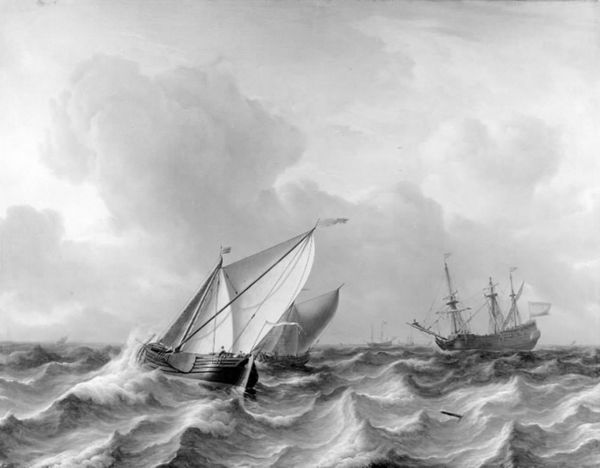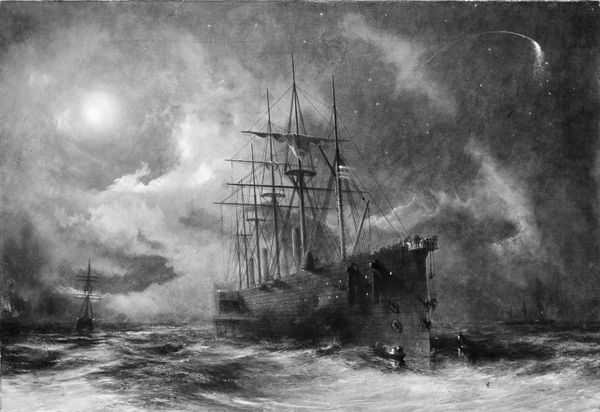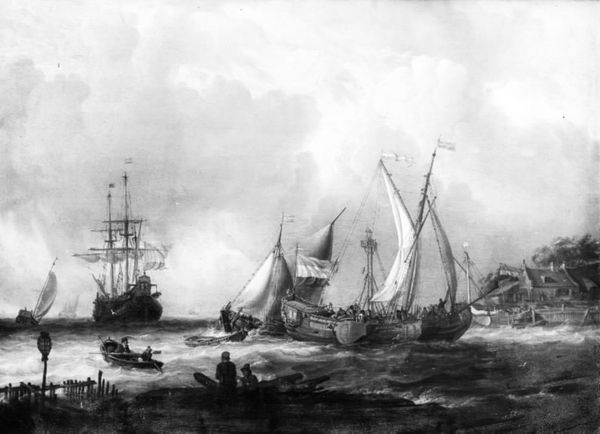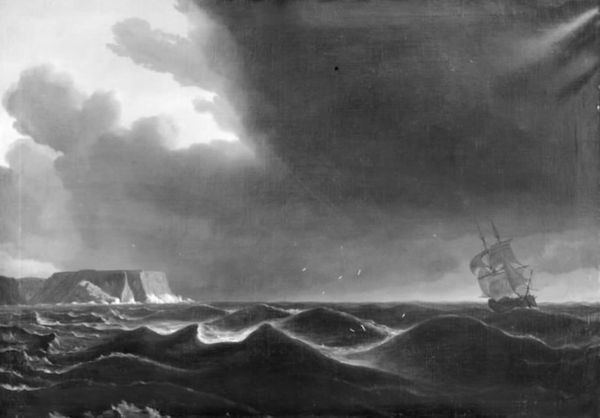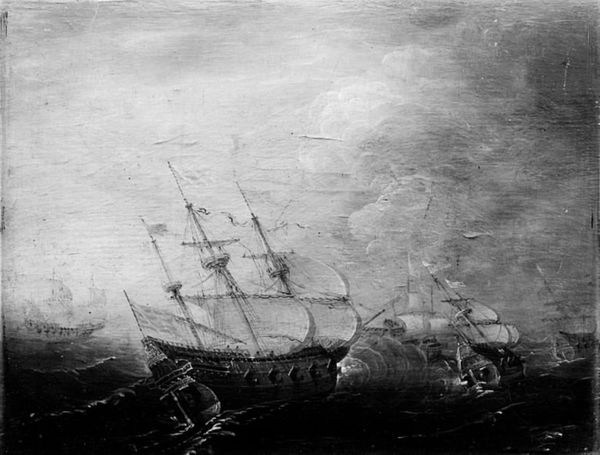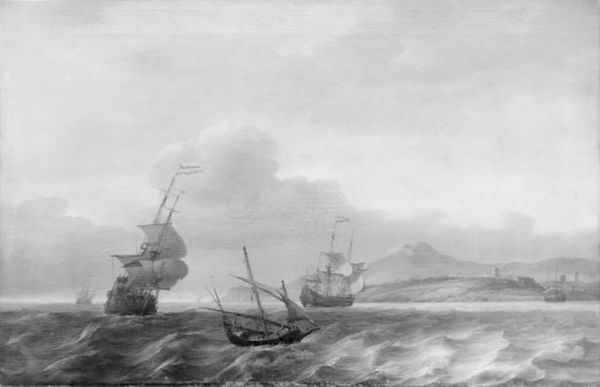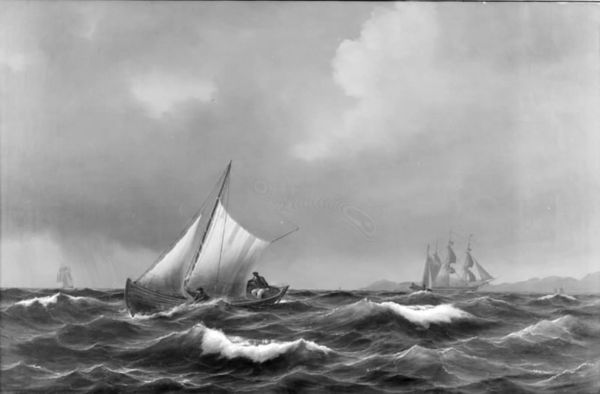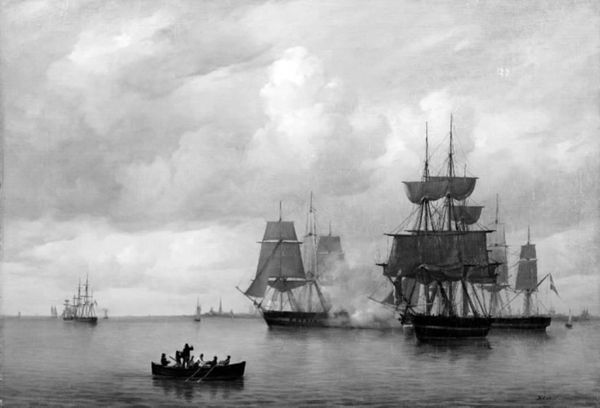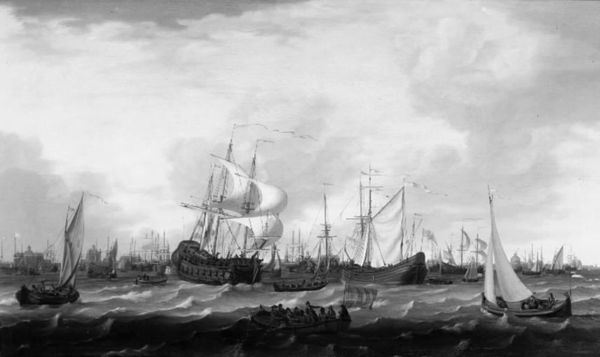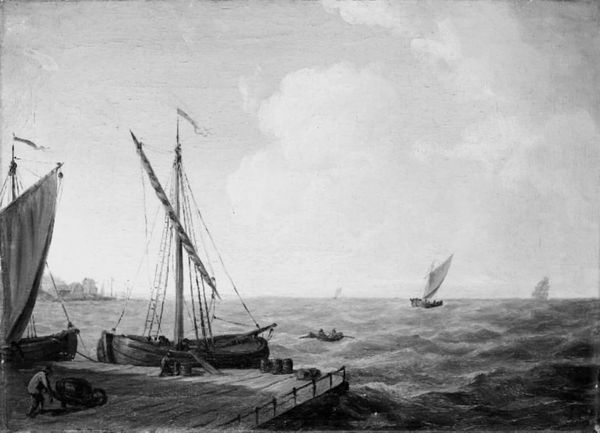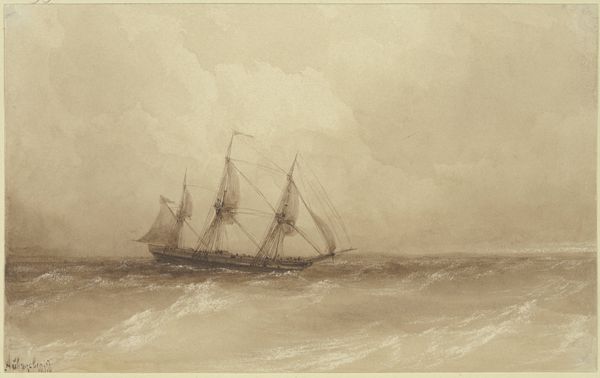
painting, oil-paint
#
painting
#
oil-paint
#
landscape
#
romanticism
#
cityscape
#
monochrome
#
charcoal
#
monochrome
Dimensions: 47 cm (height) x 65.5 cm (width) (Netto)
Curator: This is Friedrich Theodore Kloss's painting, "Fregatten 'Nymphen' i en storm i året 1832," painted in 1840. Editor: It's bleak, isn't it? Almost monochromatic. All stormy sky and turbulent water—really draws you into the raw power of the sea. Curator: Absolutely. Kloss captured a very specific moment in maritime history and also reflects larger cultural attitudes. Ship paintings were important status symbols in this period, demonstrations of national and individual power, especially naval power. They visually participated in solidifying maritime power of states with paintings showed in prominent galleries. Editor: I'm immediately drawn to the materiality of the waves, how thick the paint must be, especially in a monochromatic piece. I can almost feel the rough texture and the movement with those aggressive brushstrokes. Were these commissions a common way for painters to make a living, essentially being naval documentary labor? Curator: Definitely. And it goes beyond just commissions. Naval paintings reinforced national pride and a romanticized image of seafaring during an era of significant colonial expansion and trade. It was also a way to document the evolution of ship technology. Editor: You’re right; thinking about the labour beyond the artist, what about the shipbuilding? And those onboard, this is showing us just how much they have to weather the physical challenges of naval occupations. Makes you consider the real labour behind maintaining those status symbols. How does a storm figure into the visual economy of these maritime paintings? Curator: The storm adds a level of drama. While demonstrating the awesome force of nature, it also showcased the ship's ability to endure, to survive, which of course then translates to that naval might we mentioned earlier. Editor: So even nature is doing some work in contributing to the ship's heroic image. Knowing how physical painting can be, I wonder what kind of body was needed to create the large aggressive marks needed to produce such seascapes! It really adds another layer to consider how these romantic paintings participated in their art world. Curator: Yes! And appreciating these additional layers only deepens our comprehension and expands our view of historical perspective and the social context. Editor: Indeed. Thinking about labor really helped bring out elements I may not have thought of at first, all starting from an initial gut reaction to the stormy monochrome mood!
Comments
No comments
Be the first to comment and join the conversation on the ultimate creative platform.
